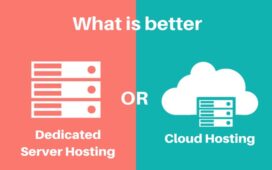With the rising popularity of WordPress as a platform to host websites, web designers have to ensure that they stay on top of every trend that can work for WordPress native users. Not only do the designers bookmark these trends but they also ensure that they get a chance to apply these trends to enhance their body of work. However, many of these trends are dismissed as unimportant or time consuming when push comes to shove.This can dishearten you as a web designer.This article is a collection of some of the best trends that are in vogue with the current demands and likings across industries, when it comes to building a WordPress website. With this article, you will not only be in a position to actually apply these trends and practices but also have a stellar portfolio to showcase to your future clients.
- Rest API
As a web designer it is a challenge to build a wordpress hosting website that is fast and takes less time for APIs to retrieve data. Since page load time of a website is of essence, web designers are using RESTful (Representational State Transfer) to lessen the duration for APIs to fetch data from websites. What REST does is, instead of fetching information from the website, it prioritises on breaking down the sequence or structure of information and presenting it without having to depend on any resources or methods. This allows REST to handle various calls and return different data formats. With a faster page load time due to RESTful API, there is a high probability that your WordPress website gets an SEO boost.
- Micro-interactions
Microinteractions are nothing but minute interactive elements added to WordPress websites to enhance user experience. These elements make WordPress websites all the more interactive, leading to high engagement and longer sessions on the website. This can in turn affect the conversions through the website. This trend, though rare, has started picking up rather quickly. We hope that you will start inculcating this one for your clients since it is touted to be a gamechanger when it comes to interactivity for websites.
- Drag and Drop content
Building your own WordPress website will never get easier. The drag and drop feature provided by WordPress themes has made life for people without technical skills, a complete cakewalk. In addition to this, drag and drop allows you to not just get your website up and ready in not time but also allows you to maneuver the website with easy. This speaks volumes about WordPress as being deployer friendly along with being user friendly.
- Module based themes
Including different modules in your WordPress website allows you to integrate many advanced functions that take user experience to a whole new level. Moreover, the drag and drop feature of WordPress websites makes the whole experience even better. Having said that, modules add a certain robustness to the entire canvas that your theme is. It makes your website a little less bloated and allows for swift navigation of the website.
- Adaptive images
With more and more users turning to mobile for web browsing, it has become critical to make your website mobile responsive. Which is why, using adaptive images is equally important. Gone are the days when shutterstock or photo-library would come to your rescue while choosing and uploading an image into the folds of your website. There is a huge probability that the image created by these stock photo libraries may not comply with a different device. Hence, turning to adaptive images is a must.
- VR based themes
VR (Virtual Reality) has ceased to be a jargon ever since designers have started understanding how it can change the way users can consume websites. VR has allowed its deployers to provide a better product experience for its users through websites. Users are completely engrossed and engaged with the website, giving them a value that rest of the websites don’t. If the whole website is executed well by the designers, VR can be that icing on the cake which will make the website truly, truly incomparable.
- Single page websites
Small is big. Because the lesser you say on your website, the more it will mean. A single page website is a perfect choice when you want to take the classic route of saying more with less content. With a single page website, it all comes down to driving that single minded proposition of your business or service. So, as a thumb rule when your client does not want to say much, yet is looking to make a statement with the website, lock single page as a choice.
We believe that you will be able to leverage these trends and make the most out of them for your clients and customers. Do bear in mind that it is not necessary to use all these trends together. Some of them could work in combinations whereas some in a silos. We assume that this can be left to the best of your judgement.













